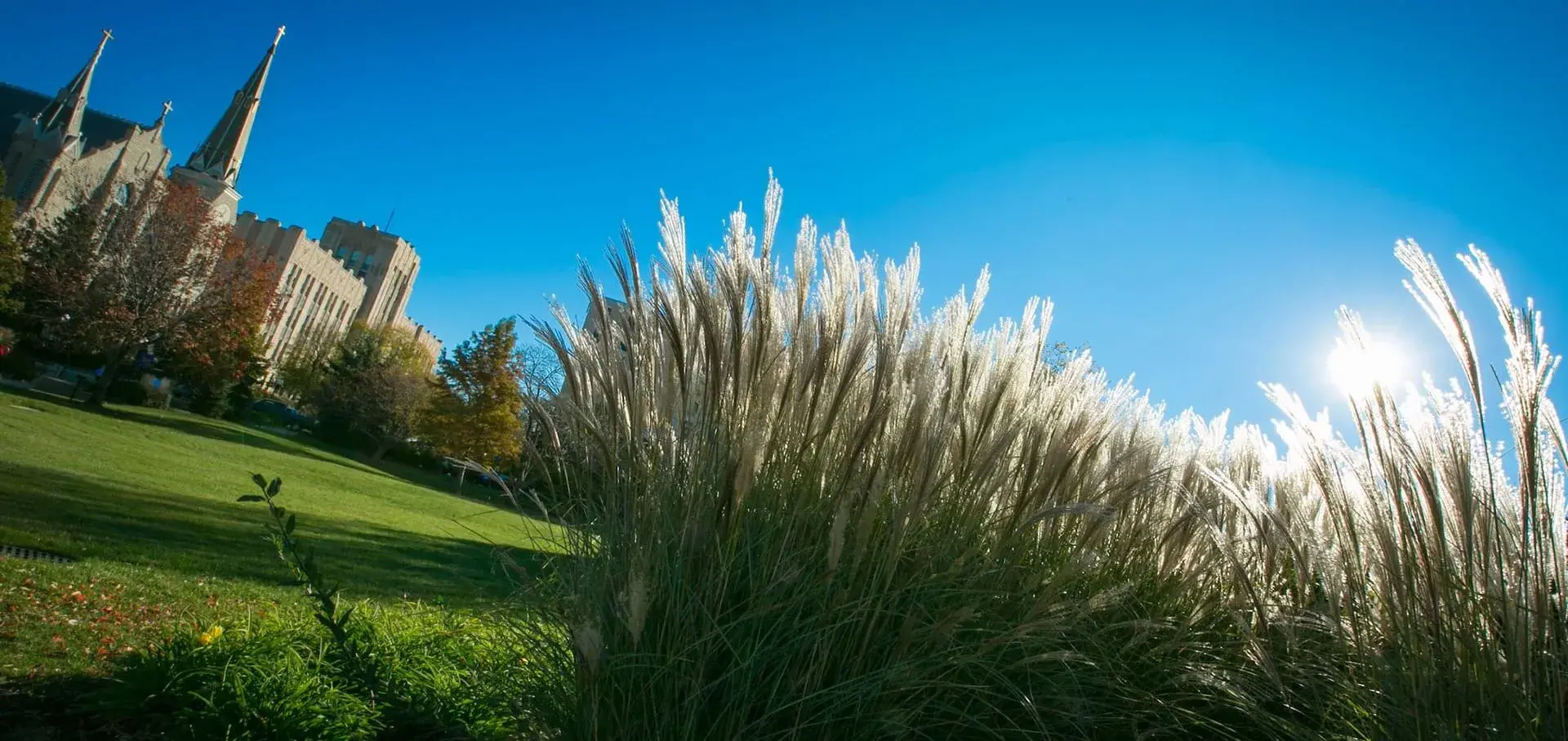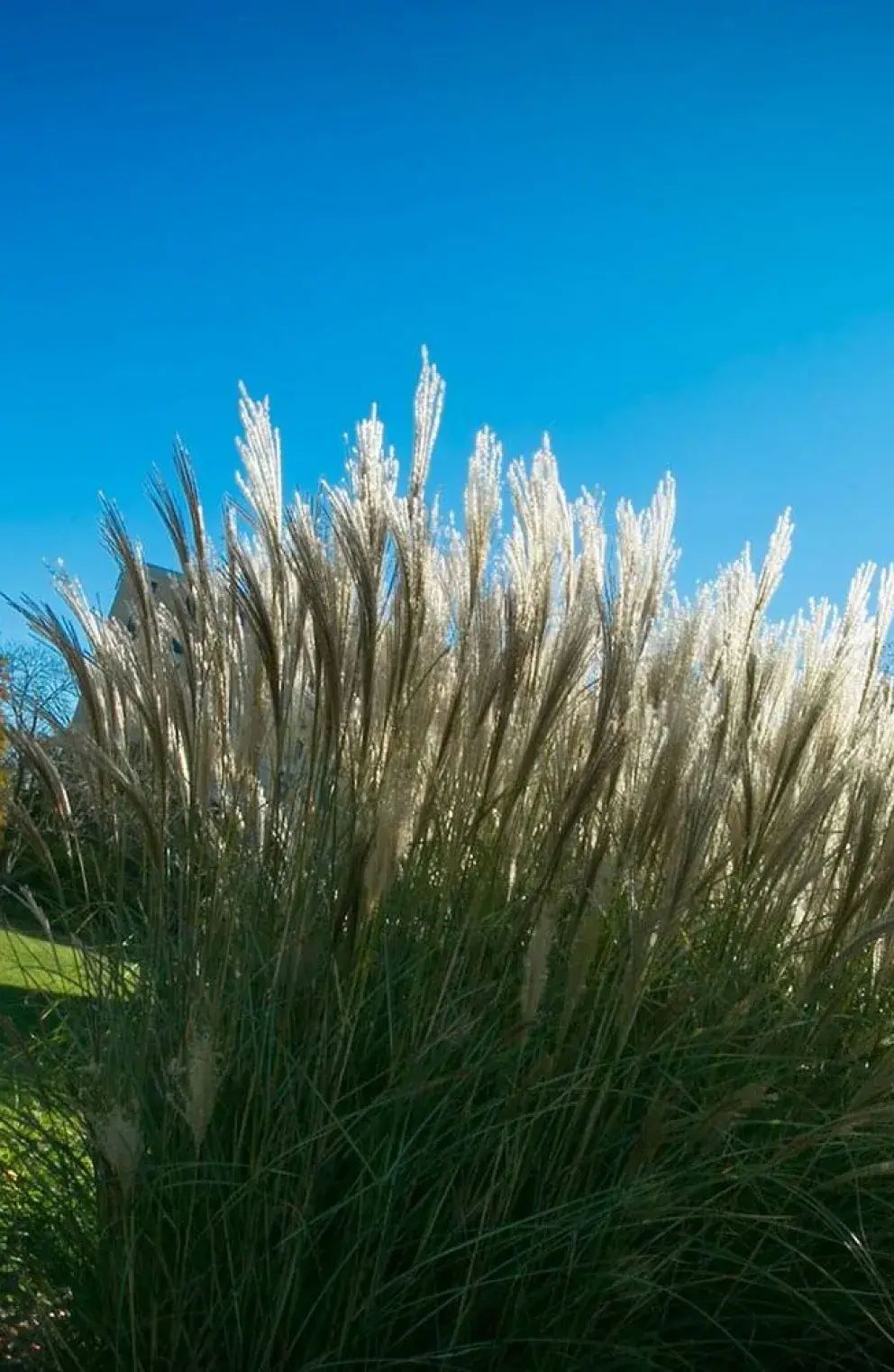
Grounds
Creighton's campus spans approximately 140 acres, which is about 6.1 million square feet. While most of campus is composed of buildings and paved areas, we have around 1.7 million square feet of landscape.
Our Landscaping division is part of Facilities Management.
We recently converted 6,500 square feet of turfgrass to native grasses and forbs, west of Markoe Hall, on the south side of Burt Street. This was the first project of its kind undertaken by Facilities Management.

In 2008, Creighton was part of the inaugural group of awardees each recognized as a Tree Campus USA. We have received the recognition every year since 2008.
Creighton Community Garden for Creighton students, faculty, and staff

square feet of ornamental beds (perennials, shrubs, and trees)

square feet of annual plantings

square feet of turfgrass
Sustainability in Creighton's Landscaping
- Thousands of square feet of annual flower beds have been replanted with perennials and shrubs. Perennials consume much less water and fertilizer.
- We use native or adaptable plant and tree species, taking care to match appropriate plants to each site, reducing water and fertilizer inputs. We also select disease and/or insect resistant varieties. Plants that are correctly sited tend to have fewer insect and disease problems.
- When possible, we use groundcover plants in place of turf on slopes, reducing the use of gas powered equipment for maintenance as well as reducing water, fertilizer and pesticide use. Established groundcover plantings also lessen soil erosion and runoff from precipitation.
- We make sure to place trees such that they shade buildings during warmer months and expose them to sunlight during the winter months, decreasing the amount of energy needed to heat and cool buildings.
- When possible, we group plants with similar water requirements and zone irrigation systems to water each plant type separately for more efficient water use.
- We use drip irrigation in all new perennial and shrub installations, minimizing evaporation and delivering water directly to the roots of plants. This minimizes disease problems often caused by overhead watering, reducing pesticide use.
- Irrigation at eight sites throughout campus is managed with a central control system linked to an on-campus weather station. The system determines how much irrigation each individual zone should receive based on precipitation and evapotranspiration rates as reported by the weather station.
- We select plants based on insect and disease resistance and their likelihood of thriving in the cultural conditions of a given site.
- We tolerate insect and/or disease problems that are not a significant health threat to the plant.
- We take care is taken to accurately identify pests in order to determine the appropriate tolerance thresholds and control methods.
- When intervention is required, cultural changes and lower-impact manual and chemical controls are the first line of defense. We choose the treatment option that has the least impact on other plants and animals and the least environmental impact, while still being effective.
- Preventative applications of pesticides are used only in areas where there are recurring insect, disease or weed problems that significantly affect the health of the landscape plants.
- With the exception of turfgrasses, we do not fertilize plants on a regular schedule. Instead, we apply fertilizer only when needed.
- We use organic mulches as soil cover in all areas of campus. We reduce our water and herbicide usage thanks to mulching, which conserves soil moisture and reduces weeds.
- We collect all landscape waste, and it is then composted at an off-site facility. When possible, grass clippings and leaves are mulched into the turf rather than bagged. Material from the pruning or removal of trees is chipped on-site and used as mulch.
- We reuse rock, retaining wall block, and other landscape materials whenever possible.
- We're considering development of rain gardens, which serve to collect stormwater runoff and allow it to seep slowly into the ground instead of directing it into storm sewers.
- We promptly clear grass clippings and granular fertilizers from sidewalks, driveways and streets, preventing them from ending up in the storm sewers and contributing to groundwater pollution.




